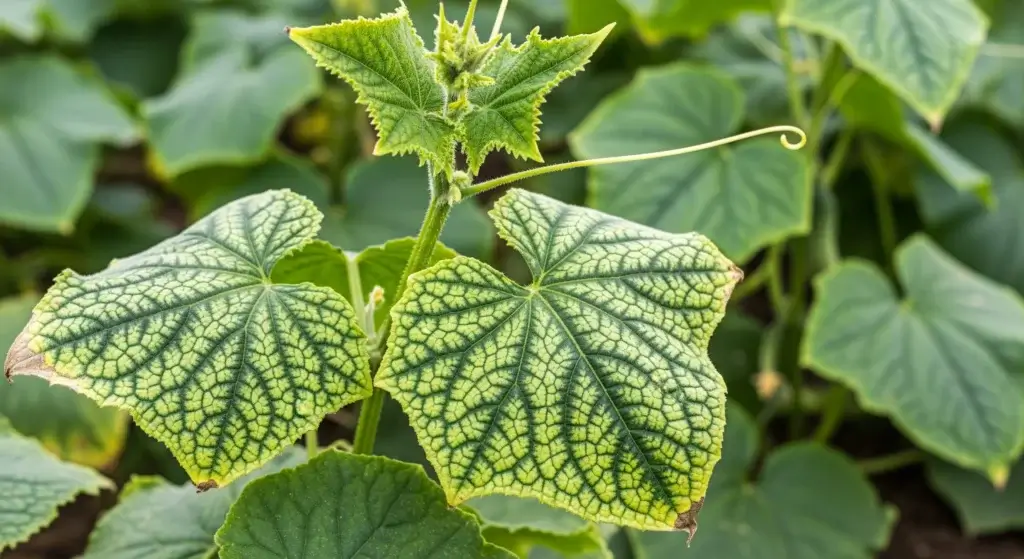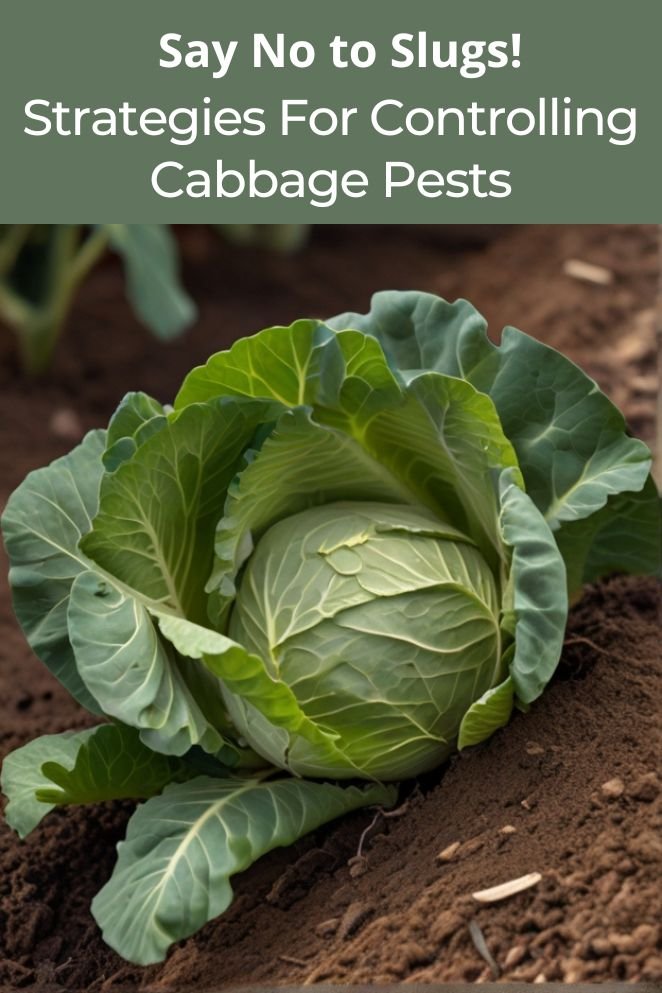
Cabbage is a popular vegetable in many gardens, but it can be susceptible to various pests that can cause significant damage and reduce yields.
In this article, we will explore both organic and conventional methods for controlling cabbage pests, including natural predators, companion planting, row covers, insecticidal soap, neem oil, insecticidal sprays, Bacillus thuringiensis (Bt), crop rotation, maintaining garden hygiene, and proper watering practices.
Common Cabbage Pests and How Do They Affect Crops
Understanding common cabbage pests and their impact on crops is crucial for effective pest management.
Let’s explore each of these pests in more detail:
Cabbage aphids (Brevicoryne brassicae)
These tiny insects feed on the sap of cabbage plants, causing damage to leaves and stems.
Aphids can reproduce rapidly, leading to significant infestations if left unchecked.
In addition to direct feeding damage, aphids can also transmit diseases like blackleg and soft rot, further compromising plant health.
Cabbage Butterfly (Pieris rapae)
The caterpillars of the cabbage butterfly, also known as cabbage worms, feed voraciously on cabbage leaves, causing extensive damage.
These pests are identifiable by their green coloration and can quickly defoliate cabbage plants if left unchecked.
Additionally, cabbage butterflies can transmit diseases like downy mildew as they feed.
Cabbage Root Fly (Delia radicum)
The larvae of the cabbage root fly burrow into the roots of cabbage plants, causing damage and making them more susceptible to disease.
Young seedlings and recently transplanted plants are particularly vulnerable to attack.
Infested plants may exhibit wilting, stunted growth, and a general decline in health.
Flea Beetles (Phyllotreta spp.)
Flea beetles are small, black insects that feed on the foliage of cabbage plants, creating holes and causing damage. Their feeding activity can weaken plants and reduce yields.
Flea beetles can also transmit diseases like bacterial leaf spot as they feed.
These pests are most active during warm weather and can be challenging to control once established.
Cabbage Loopers (Trichoplusia ni)
Cabbage loopers are caterpillars that feed on cabbage leaves, causing damage and reducing yields.
These pests are named for their looping movement when crawling.
Cabbage loopers can be difficult to control once established, making early detection and intervention crucial.
Infested plants may exhibit ragged foliage and reduced vigor.
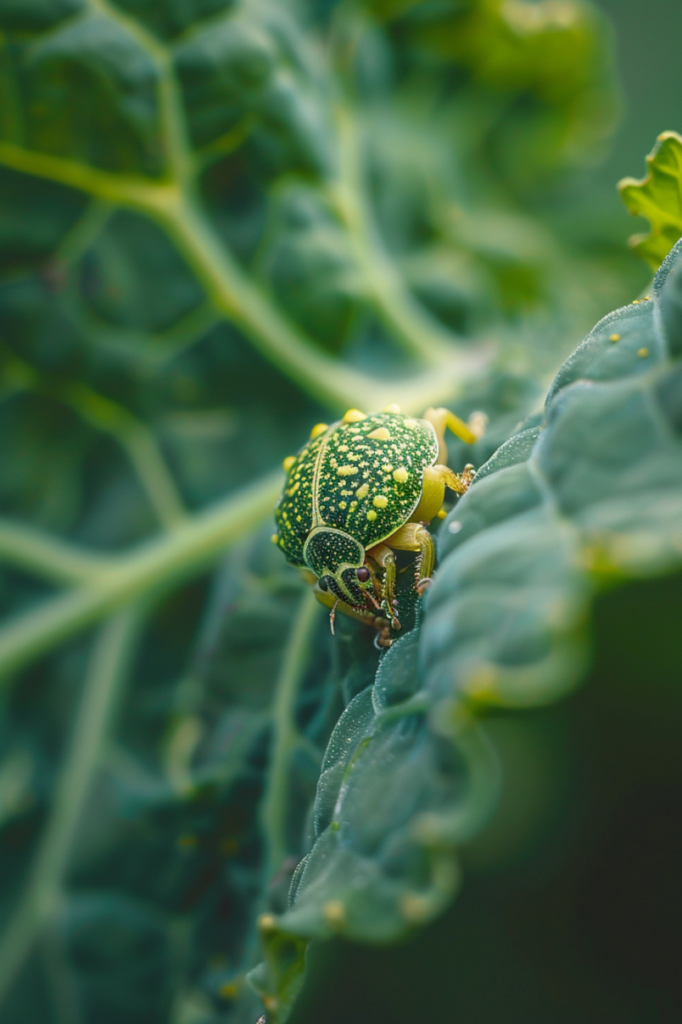
Organic Pest Control Methods
When it comes to keeping cabbage pests at bay in an organic garden, there are several effective methods to choose from.
Let’s delve into the details of each approach:
Natural predators
Introducing beneficial insects like ladybugs and lacewings is a natural and effective way to control cabbage pests.
Ladybugs are voracious eaters of aphids, whiteflies, and other soft-bodied insects that can wreak havoc on cabbage plants.
Lacewings, on the other hand, feast on aphids, caterpillars, and other pests, helping to maintain a balanced ecosystem in your garden.
To attract these beneficial insects, plant a variety of flowers and herbs that provide nectar and pollen, such as marigolds, dill, and rosemary.
This creates a welcoming habitat for natural predators, helping to keep cabbage pests in check without the need for harmful chemicals.
Companion planting
Companion planting involves strategically planting herbs and flowers alongside cabbage to repel or deter pests.
Dill, for example, is known for its ability to repel aphids and other pests that target cabbage.
Rosemary can help deter cabbage moths, while marigolds have been shown to repel nematodes, which can harm cabbage plants.
By incorporating these companion plants into your garden, you create a natural barrier against pests, reducing the likelihood of infestations and promoting overall plant health.
Row covers
Row covers provide a physical barrier to prevent pests from reaching cabbage plants.
These lightweight, porous fabrics allow sunlight and water to penetrate while keeping pests at bay.
Row covers are particularly effective against flying pests like cabbage moths, which lay their eggs on cabbage leaves, leading to caterpillar infestations.
By covering your cabbage plants with row covers early in the season, you can prevent pest damage and enjoy healthier harvests.
Insecticidal soap
Insecticidal soap is a safe and environmentally friendly option for controlling soft-bodied insects such as aphids and whiteflies.
Made from plant-derived fatty acids, insecticidal soap works by suffocating and dehydrating pests on contact.
It can be applied directly to affected plants or diluted with water and sprayed over the entire garden.
Regular application of insecticidal soap helps to keep pest populations in check without harming beneficial insects or other wildlife in the garden.
Neem oil
Neem oil is a natural pesticide derived from the seeds of the neem tree.
It has both insecticidal and fungicidal properties, making it effective against a wide range of pests and diseases.
Neem oil works by disrupting the growth and development of pests like cabbage moths, aphids, and whiteflies, while also suppressing fungal pathogens that can damage cabbage plants.
To use neem oil, dilute it with water according to the manufacturer’s instructions and apply it to affected plants or as a preventative measure throughout the growing season.
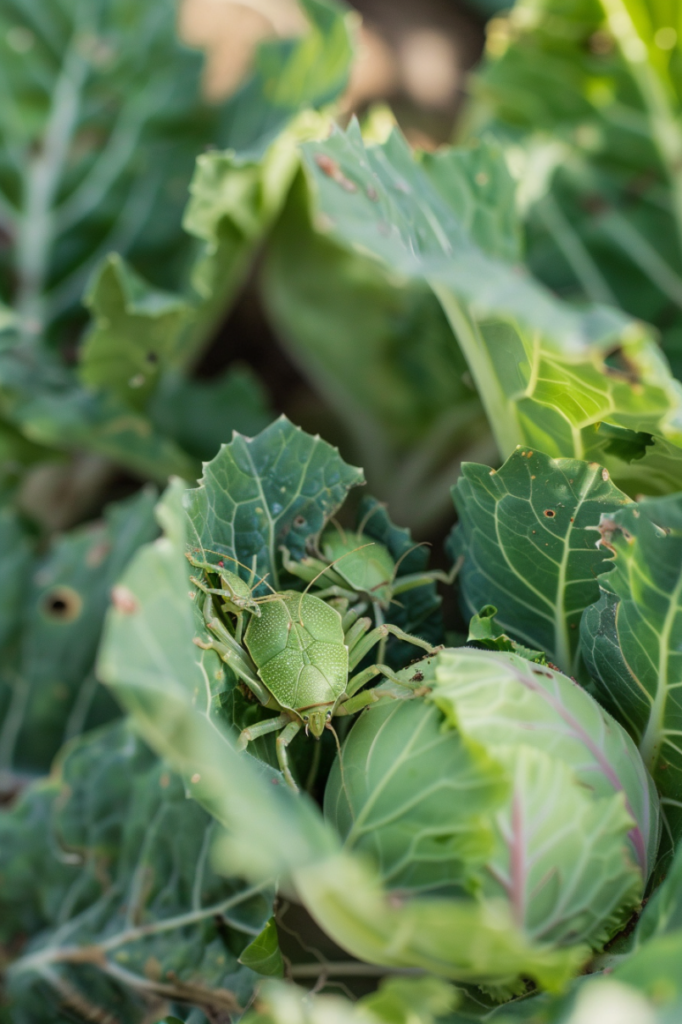
Conventional Pest Control Methods
When faced with severe pest infestations in conventional gardening, there are several established methods for pest control.
Let’s explore these conventional pest control methods in detail:
Insecticidal Sprays
Insecticidal sprays are a commonly used method for controlling pests by directly targeting them with chemical compounds.
These sprays contain toxic substances that are lethal to pests upon contact.
While insecticidal sprays can effectively combat severe infestations, it’s crucial to use them responsibly and adhere to safety guidelines to prevent harm to humans, pets, and the environment.
Bacillus thuringiensis (Bt)
Bacillus thuringiensis (Bt) is a naturally occurring bacterium that produces toxins harmful to specific caterpillars, including those that target cabbage plants.
Bt is considered a biological insecticide and is widely used in conventional pest control practices.
When ingested by susceptible caterpillars, Bt toxins disrupt their digestive systems, ultimately leading to their demise.
Bt is regarded as an environmentally friendly option for pest control, as it specifically targets pests without harming beneficial insects, humans, or other organisms in the ecosystem.
Preventative Measures
Implementing preventative measures is key to maintaining a healthy and pest-resistant garden.
Let’s delve into the details of some effective preventative measures:
Crop rotation
Crop rotation involves planting different crops in succession in the same area to disrupt the life cycles of pests and diseases.
For cabbage pests like cabbage moths, rotating cabbage with unrelated crops can help break the cycle of infestation.
By planting cabbage in a different location each year or rotating it with non-cruciferous crops, you can reduce the buildup of pests and diseases in the soil.
Maintaining garden hygiene
Keeping your garden clean and tidy is essential for preventing pest infestations.
Regularly remove weeds, debris, and fallen plant material from your garden to eliminate hiding places and breeding grounds for pests.
Pay particular attention to areas around cabbage plants, as pests may hide in the foliage or soil.
By practicing good garden hygiene, you can create an environment that is less hospitable to pests and reduce the likelihood of infestation.
Watering Practices
Proper watering practices play a crucial role in pest prevention.
Overwatering can create moist conditions that attract moisture-loving pests like slugs and snails, while also promoting fungal diseases.
To prevent pest infestations, water your plants deeply and infrequently, allowing the soil to dry out slightly between waterings.
Use drip irrigation or soaker hoses to deliver water directly to the root zone and minimize moisture on the foliage, which can attract pests.
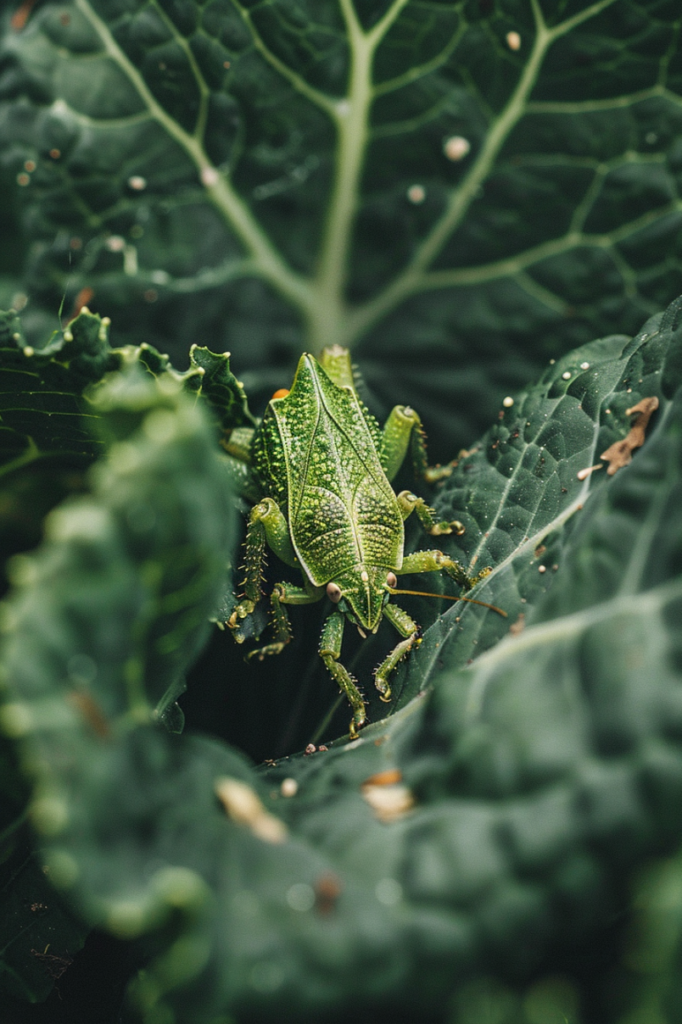
Conclusion
Controlling cabbage pests requires a combination of organic and conventional methods.
By using natural predators, companion planting, row covers, insecticidal soap, neem oil, insecticidal sprays, Bacillus thuringiensis (Bt), crop rotation, maintaining garden hygiene, and proper watering practices, you can create a balanced and resilient garden ecosystem that is less susceptible to pest infestations.

